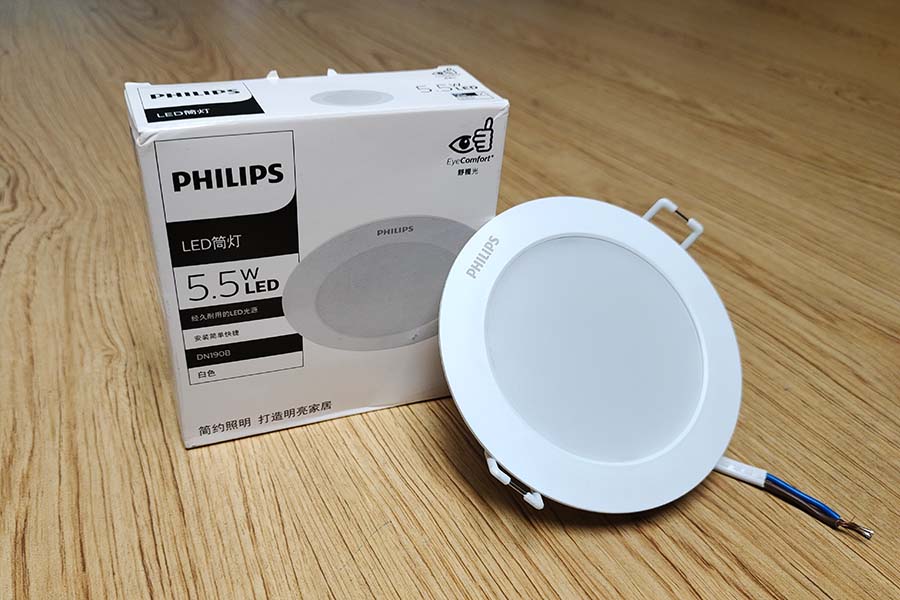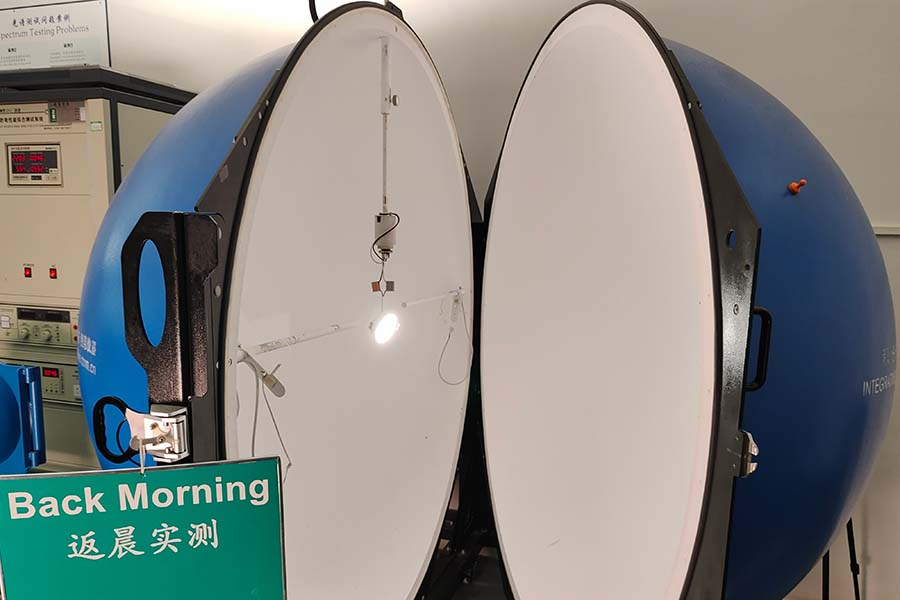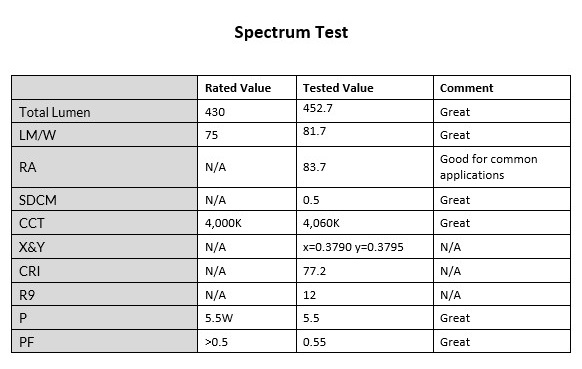LED downlights are very good choices for homes, offices, shopping malls, etc.
There are many reputable brands in the market.
And Philips is one of the top leading brands.
It is a favorite pick for many users
However, LED downlights look identical if only judged by their exterior appearance.
It can be difficult and even confusing for regular users to pick the right one.
For this reason, we decided to buy a sample of Philips DN190B.
Use it as an example to explain how to choose a good LED downlight.
Below is some basic information about this sample.
- Model: Philips EyeComfort DN190B
- Specifications: 5.5W, 4,000K, 430 Lumens, 220V – 240V, 50/60 Hz
1. First Thing to Consider Before You Buy
Usually, LED downlights are installed on the ceiling.
You will need a ladder or chair in case you need to install or replace them.
This is not difficult, but not convenient.
For this reason, we’d say quality should be the first thing to consider when you buy LED downlights.
That means you won’t have to maintain or even replace them once you finish the installation.
Especially, it’s common to install multiple LED downlights on the ceiling, rather than only one.
So, it’d be better to minimize the risk of issues due to lower quality.
2. First Impression on Overall Design
The body of the LED downlight sample is made of white engineering plastic.
It has a lightweight design and saves materials.
This is good for LED lights with low wattages.
And the importance is the parameters and lifespan.
And engineering plastic doesn’t make your interior design look cheap.
The downlights are installed on the ceiling after all.
It’s so easy to notice the material’s difference.
One thing to mention.
- The body is a kind of matte white.
Not glossy white.
This is a commonly good choice to match various interior designs.
Besides, there are different colors available for the bodies of LED downlights.
Common alternative designs include black, and silver (polished aluminum).
You can pick the one that matches your interior design.
After the first impression, then we come to the most important parts.
They are the electrical performance and the spectrum test.
In plain English, we are going to talk about how well this downlight illuminates your space.
We use professional instruments to test Philips DN190B.
And we obtain SOME important parameters.
Both the instruments and test methods are common practices for some other household names.
3. Voltage Range
We would like to talk a little bit about the working voltage range.
It’s essential to make sure the light will work properly within a voltage range.
- The power grid doesn’t provide electricity at a fixed value – like exactly 220V all the time.
- Actually, it supplies electricity within a voltage range.
It’s important to make sure the light will work normally within a given range of voltage.
That means the LED light won’t flick when the input voltage rises or drops within its rated range.
And we also must avoid the lights, which go off completely when the voltage changes.
As for the Philips LED downlight sample, it doesn’t flick within its applicable voltage.
And it stays on constantly.
This result means it is good within its rated voltage range.
4. Spectrum Test
In this part, we are going to talk about the quality of its light.
Below is the data that we’ve got after testing it with a spectroradiometer.
And we will talk about the value one by one.
1). Total Lumen
The term Lumen is a common indicator for comparing the brightness of LED lights.
Lumen is a measure of the total quantity of visible light emitted by a source per unit of time.
In plain English, it indicates how much horsepower a car produces with burning the same volume of gas.
Therefore, if you want a brighter light, then pick the one with a bigger Lumen value, rather than a bigger wattage value.
- Here we can see that the sample produces 452.7 Lumens.
- It’s more than its rated value 430 Lumens.
That means it is a little bit brighter than it claims to be.
It’s a great real performance.
2). LM/W
The lumen to watt ratio indicates the efficiency of the LED light.
It indicates how much light is output per Watt of energy consumed.
It’s the same concept as how much horsepower a car produces with 1 liter of gas.
A bigger value of LM/W indicates the LED light produces more light.
That means this light is more energy-efficient.
- Philips indicates a rate value of 75 for its LM/W.
- While the tested value that we got is 81.7.
We can say it’s great.
3). RA
This parameter measures the color rendering property of an LED light.
It is called General Color Rendering Index.
It measures the ability of a light source to reveal colors of objects in contrast to a natural light source.
Quite often, the same object looks different in different lighting conditions.
The object itself has not changed, but its appearance changes.
The object itself doesn’t produce light.
It reflects the light from a source to your eyes.
For this reason, the value of the color rendering index is important for you.
Generally speaking, a bigger value of the color rendering index means better quality of the LED light.
- Philips’ sample doesn’t indicate its value on its package box.
- The tested value is 83.7.
This is quite good for regular applications for homes and offices.
4). SDCM
SDCM is an acronym that stands for Standard Deviation Color Matching.
- The lower the number of SDCM, the smaller the color shift.
Imagine that you install 7 downlights on the ceiling.
If their SDCM is too big, you will see one color for the first light.
And another color for the second light.
Will you be happy to see such a lighting effect?
- The downlight DN190B has a very small SDCM value 0.5.
This is a great result.
It will be an ideal choice if you need to install multiple LED downlights on the same ceiling.
5). CCT
For regular users, you can think about Correlated Color Temperature or CCT in a simplified way.
Take it as a gauge of how yellow or blue the color of light emitted from an LED light appears.
It’s measured in the Kelvin unit.
- And common CCT values are between 2,200 – 6,500 Kelvin degrees.
The CCT value 4,060 is a good choice for a wide variety of applications.
They include outdoor site lighting, general retail, offices, hospitals, etc.
Some interior designers don’t recommend CCT 4,000 for applications in restaurants, hotel lobbies, or guest rooms.
It’d be better to install LED lights with smaller CCT numbers for those places, like 2,700-3,500K.
That means the light appears to be warmer.
And it’d be better to create warmer feelings for those applications.
As a quality inspection company, BackMorning can’t say whether you should pick this light for these applications.
These tips only serve as additional reminders for your reference.
It’s always up to your preference.
6). Wattage
Wattage usually confuses many regular users.
Wattage used to be a directly accurate number to indicate how bright a light is.
But the time has been long gone for LED lights.
Wattage is no longer directly accurate for comparing the brightness of different LED lights.
It directly indicates how much electricity that light uses.
It is the same concept as how much gas a car uses.
But it doesn’t mean a car produces more horsepower if it uses more gas.
Therefore, a 6.0W LED light doesn’t necessarily produce more light than a 5.5W LED light.
Here we show you that the tested wattage value for Philips DN190B is 5.5W.
The purpose is to show you this brand is telling the correct number.
And you won’t make mistake if 5.5W is what you are looking for.
5. Conclusion
This LED downlight Philips DN190B is a great choice for indoor applications.
Especially, it produces light of great quality – color rendering, color temperature, and color uniformity.
Meanwhile, it also does pretty well regarding the efficiency of turning electricity into light.
Overall, you can consider this LED downlight if the quality is your priority.
Last but not least, it’s always more than happy to do more reviews on other LED lights.
That’d be helpful for people to make good buying decisions.
- What do you think about our first review post?
- And which LED light you wish to know in our next review post?
Please leave us a comment.
And we will be happy to test and review it.
Thanks for reading!
Related posts:
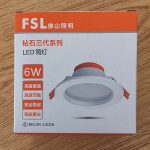 Review on FSL LED Downlight 6.0W MQ3K-LED6
Review on FSL LED Downlight 6.0W MQ3K-LED6
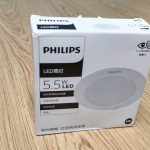 Spectrum Test for Philips LED Downlight DN190B 5.5W
Spectrum Test for Philips LED Downlight DN190B 5.5W
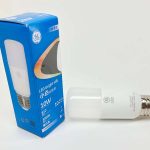 Review on GE Light Bulb LED Bright Stik 10W
Review on GE Light Bulb LED Bright Stik 10W
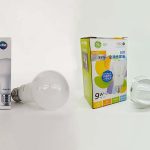 Comparing LED Light Bulb Quality: Philips 10W vs GE 9W
Comparing LED Light Bulb Quality: Philips 10W vs GE 9W
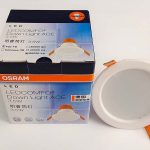 Review on LED Downlight Osram 3.5W 20220808
Review on LED Downlight Osram 3.5W 20220808
 Test and Show High Quality Streetlight T12A-2 – Shape and Structure
Test and Show High Quality Streetlight T12A-2 – Shape and Structure

